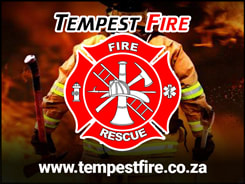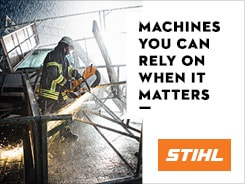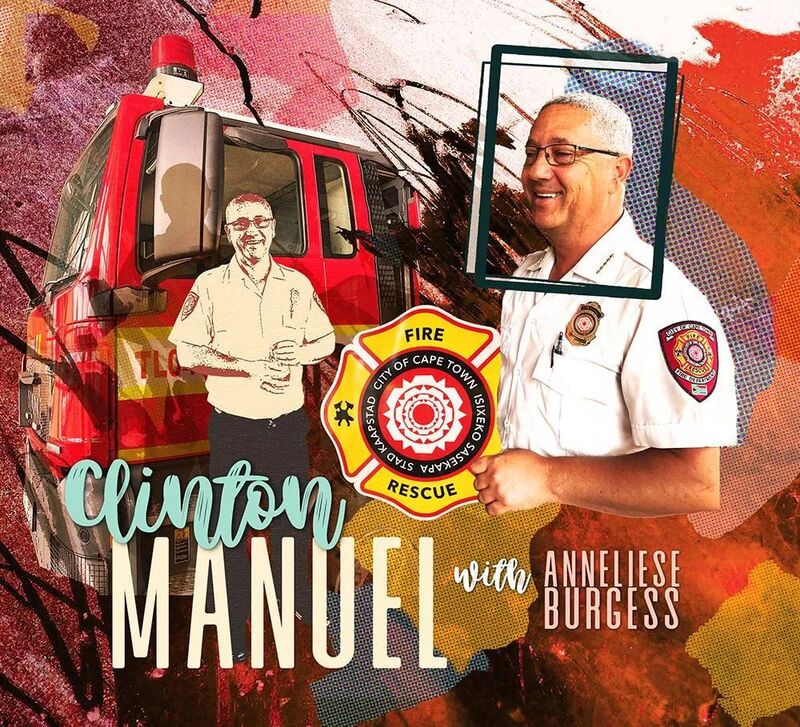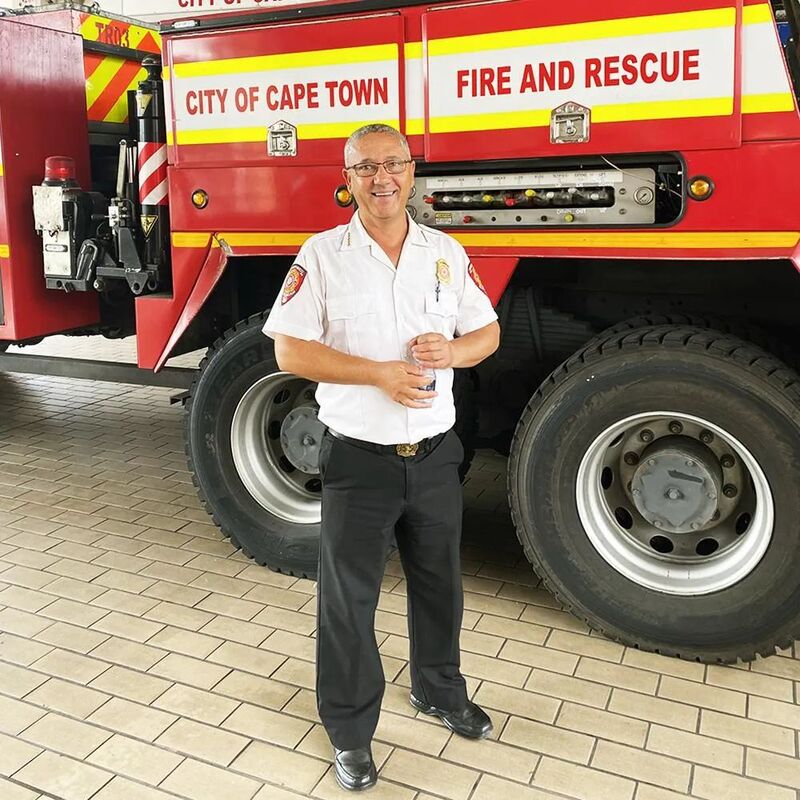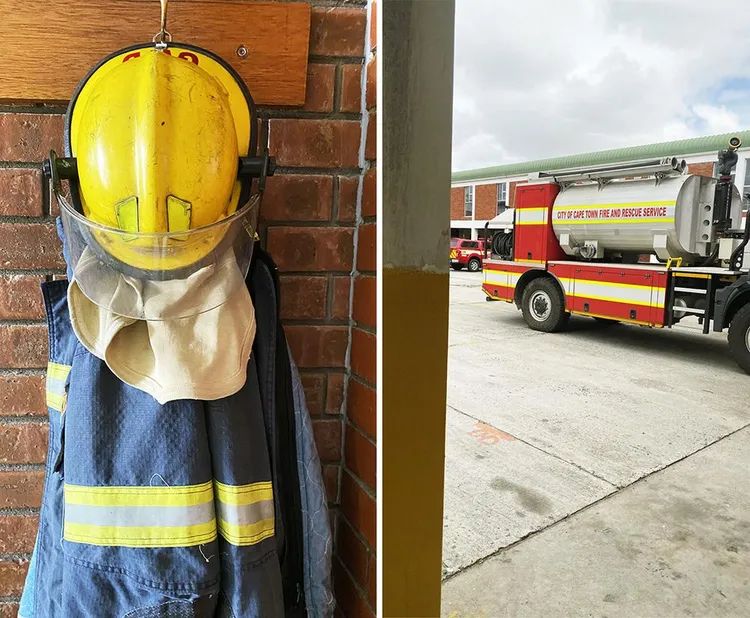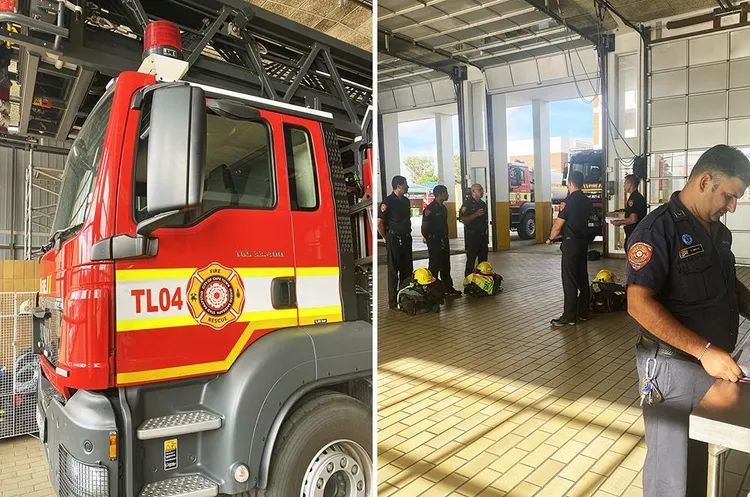- Home
- Magazines
-
Newsletters
- 19 July 2024
- 12 July 2024
- 5 July 2024
- 28 June 2024
- 14 June 2024
- 7 June 2024
- 31 May 2024
- 24 May 2024
- 17 May 2024
- 10 May 2024
- 3 May 2024
- 26 April 2024
- 19 April 2024
- 12 April 2024
- 22 March 2024
- 15 March 2024
- 8 March 2024
- 1 March 2024
- 23 February 2024
- 16 February 2024
- 9 February 2024
- 26 January 2024
- 19 January 2024
- 12 January 2024
- 22 December 2023
- 1 December 2023
- 24 November 2023
- 10 November 2023
- 3 November 2023
- 27 October 2023
- 20 October 2023
- 13 October 2023
- 6 October 2023
- 29 September 2023
- 22 September 2023
- 15 September 2023
- 8 September 2023
- 25 August 2023
- 18 August 2023
- 11 August 2023
- 4 August 2023
- 28 July 2023
- 21 July 2023
- 14 July 2023
- 7 July 2023
- 30 June 2023
- 23 June 2023
- 15 June 2023
- 2 June 2023
- 26 May 2023
- 19 May 2023
- 12 May 2023
- 5 May 2023
- 28 April 2023
- 21 April 2023
- 14 April 2023
- 6 April 2023
- 31 March 2023
- 24 March 2023
- 17 March 2023
- 10 March 2023
- 3 March 2023
- 24 February 2023
- 17 February 2023
- 10 February 2023
- 3 February 2023
- 27 January 2023
- 13 January 2023
- 22 December 2022
- 15 December 2022
- 9 December 2022
- 2 December 2022
- 25 November 2022
- 18 November 2022
- 11 November 2022
- 4 November 2022
- Advertising
- Subscribe
- Articles
-
Galleries
- AOSH Firexpo 2024
- Midvaal Fit to Fight Fire 2024
- WoF KNP 2023 Gallery
- TFA 2023 Gallery
- DMISA Conference 2023
- ETS 2023 Gallery
- Drager Fire Combat and Rescue Challenge 2023
- AOSH Firexpo 2023
- Midvaal Fit to Fight Fire
- WC IFFD 2023
- NMU 13th Fire Management Symposium 2022
- JOIFF Africa Conference 2022
- ETS 2022 Gallery
- TFA 2022 Gallery
- IFFD 2018
- SAESI
- TFA
- WRC 2018
- WRC 2019
- A-OSH/Securex
- IFE AGM 2019
- ETS Ind Fire Comp Nov 2019
- ETS Challenge 2021
- Drager launch
- Drager Fire Combat and Rescue Challenge 2022
- TFA
- Contact
- Home
- Magazines
-
Newsletters
- 19 July 2024
- 12 July 2024
- 5 July 2024
- 28 June 2024
- 14 June 2024
- 7 June 2024
- 31 May 2024
- 24 May 2024
- 17 May 2024
- 10 May 2024
- 3 May 2024
- 26 April 2024
- 19 April 2024
- 12 April 2024
- 22 March 2024
- 15 March 2024
- 8 March 2024
- 1 March 2024
- 23 February 2024
- 16 February 2024
- 9 February 2024
- 26 January 2024
- 19 January 2024
- 12 January 2024
- 22 December 2023
- 1 December 2023
- 24 November 2023
- 10 November 2023
- 3 November 2023
- 27 October 2023
- 20 October 2023
- 13 October 2023
- 6 October 2023
- 29 September 2023
- 22 September 2023
- 15 September 2023
- 8 September 2023
- 25 August 2023
- 18 August 2023
- 11 August 2023
- 4 August 2023
- 28 July 2023
- 21 July 2023
- 14 July 2023
- 7 July 2023
- 30 June 2023
- 23 June 2023
- 15 June 2023
- 2 June 2023
- 26 May 2023
- 19 May 2023
- 12 May 2023
- 5 May 2023
- 28 April 2023
- 21 April 2023
- 14 April 2023
- 6 April 2023
- 31 March 2023
- 24 March 2023
- 17 March 2023
- 10 March 2023
- 3 March 2023
- 24 February 2023
- 17 February 2023
- 10 February 2023
- 3 February 2023
- 27 January 2023
- 13 January 2023
- 22 December 2022
- 15 December 2022
- 9 December 2022
- 2 December 2022
- 25 November 2022
- 18 November 2022
- 11 November 2022
- 4 November 2022
- Advertising
- Subscribe
- Articles
-
Galleries
- AOSH Firexpo 2024
- Midvaal Fit to Fight Fire 2024
- WoF KNP 2023 Gallery
- TFA 2023 Gallery
- DMISA Conference 2023
- ETS 2023 Gallery
- Drager Fire Combat and Rescue Challenge 2023
- AOSH Firexpo 2023
- Midvaal Fit to Fight Fire
- WC IFFD 2023
- NMU 13th Fire Management Symposium 2022
- JOIFF Africa Conference 2022
- ETS 2022 Gallery
- TFA 2022 Gallery
- IFFD 2018
- SAESI
- TFA
- WRC 2018
- WRC 2019
- A-OSH/Securex
- IFE AGM 2019
- ETS Ind Fire Comp Nov 2019
- ETS Challenge 2021
- Drager launch
- Drager Fire Combat and Rescue Challenge 2022
- TFA
- Contact
|
15 March 2024
|
A fire chief forged in the heat of battle
Clinton Manuel is the fire chief in Cape Town, where there have been an unprecedented 13 000 fires since December. Anneliese Burgess spoke to him about his refusal to back down on fitness and training standards, why he believes arson is behind some of the Peninsula's biggest summer fires and how he almost lost his life in the raging Knysna fire.
It is 2017. The year of the great fire in Knysna. Clinton Manuel is the fire chief.
The Garden Route town is surrounded by a ring of flames. Manuel has never seen anything like it in his more than 30 years in the service. He is evacuating one area after another. Reinforcements arrive from across the country. He is overseeing the evacuation of an area called Welbedacht when suddenly he finds himself trapped.
“I had gone up a bit too far and suddenly found myself with an advancing flame front, snot running, tears running. We train our firefighters that with an advancing flame front like that, you get into ‘the black’ … it will be hot but you won’t burn.
“I curled up in the middle of the tar road in my personal protective equipment. I lay in the foetal position with my back towards the fire, with my flash suit and my wet mask on, hoping the flames would go over me. Then, suddenly, I could breathe and the first thing that went through my mind was that I was dead.”
He laughs. A grim laugh.
“But then I realised that the fire had somehow gone over me. When hot air rises it makes way for cold air and that is why there was clean air for me to breathe. I could stand up and I couldn’t believe what I was seeing. The fire was spreading on a thermal wave. Hitting a house here, skipping others there. Like a plane dropping bombs. There was a heat vortex and every time it came down would set something alight. I had never seen anything like it.
“I ran back to my truck and got on the radio and said to my guys, ‘Whatever you do, get out of the front of this fire, get away from the front, only approach it from the side because it’s spreading on a thermal wave'."
For a thermal fire you need five things, Manuel explains. After the Knysna fire he immersed himself in the science.
“Number one is topography. It’s not going to happen in a flat area. When fire burns uphill, it creates a microclimate that pulls up hot air and the flames and then when it gets to the top of a hill the pressure will push that thermal column down again. But there will be enough unburned gas to sustain combustion.
“So you don’t get heat coming down, you get a flame coming down and that’s how this fire spreads.”
The four other elements were also present in the Kynsna fire, creating this ferocious, unstoppable, unpredictable wall of fire that propelled itself forward with jumping fireballs.
“It was the perfect storm,” Manuel explains.
“You need strong winds. You need fuel, Kynsna is surrounded by forests. You need sustained combustion, we had an extremely well-developed fire front on our hands. And you need a fire that is generating its own microclimate to support the column rising and then coming down. Well, I had seen it happen before my eyes."
Tough decisions
By this time, two municipal areas were burning, Knysna and Bitou. A joint operational command (JOC) was set up in Kynsna to coordinate the different fire services from across the province and the country and other services such as the National Sea Rescue Institute and the Mountain to Ocean foresters. Manuel took command. He hadn’t slept for three days.
He had pinned his hopes on the fire running out of fuel in the Brenton area, but then the wind turned and it started burning towards Buffalo Bay.
“This area has one road going in and it was very overgrown. I had three spotter planes in the air and one of them was fitted with a camera that was feeding live into the incident command post. I could see three different fronts approaching. There was enormous pressure for me to evacuate Buffalo Bay but the information I was getting from the pilot was that nobody would make it out on that road.
“To give you an idea of how hot it was, even before the flames got there, I had sent fire trucks in. One of the smaller units was a Land Cruiser which we call a skid unit. The pump is on the back and the fuel tank is plastic. The heat was so intense that the fuel tank caught alight. Fortunately, the driver was very experienced. He was the assistant chief officer in the Garden Route Municipality. He saw what was happening in his rear view mirror and all he had in the vehicle was a 2-litre bottle of Coke in the cab.
“Now at this point, all he could do was drive as fast as possible to try and get ahead of the heat, but while was doing this he had the forethought to start shaking the Coke bottle, and at some point he stopped the vehicle, jumped out and extinguished the fire on the back with the foam from the bottle. This is where experience and training counts."
Critical decision
The fire was fast approaching Buffalo Bay and Manuel decided he would not evacuate the area. By this time he was exhausted. Days without sleep. One crisis after another. It was one of the biggest decisions he had ever made.
“If my call was the wrong one, hundreds of people were going to die. Firefighters were going to die. The burden of that decision was just enormous. But I had to go with what my 30 years of firefighting had taught me. If we were going to try to use the road out, I would be risking people being overcome by the advancing fire front and burning to death in their cars.”
He made the call. Now he wondered if you could evacuate by sea. He phoned the NSRI station commander, who had previously helped evacuate other areas by sending craft up the river.
“Jerome said there was no way he would get craft through the Heads from Knysna or even launch from Wilderness, because the wind was simply too strong. So, it was left to the firefighters.
“I had six major pumps at my disposal in Buffalo Bay with crews from all over. Major pumps are PTO-driven so the engine drives the pump and you are delivering 3 600 litres of water per minute. That’s what you need in a situation like that to throw wetlines, which is when you use foam to hold back the flame front, slow down the fire spread but also to guide a fire in a specific direction.
“I instructed the crews to do in-situation protection when you keep people inside their houses with closed doors and windows so they don’t get in the way of firefighters.”
It is an excruciating few hours for Manuel. “It’s dead quiet in the JOC. I’m starting to seriously doubt my decision."
He senses that everyone around him is questioning his decision not to evacuate. Then the first report comes in from the scene.
It is the voice of “Buksie”, the officer who put out the fire on his skid unit with the Coke bottle.
“He raises the command post and says ‘I want to inform the chief that we have pushed the fire around Buffalo Bay. No houses lost. No people injured.”
The JOC erupts. Everyone applauding. Manuel feels tears roll down his cheeks. “I was just so relieved,” he says.
Competence is not negotiable
“Every decision I make is informed by the many, many fires that have come before. And that night I had 30 years of fires that helped guide my decision not to evacuate Buffalo Bay. As fire officers, we make decisions that can decide whether people live or die and I will not bend the rules or compromise on training and competence assessments for promotion. Wrong decisions are made by people who are not qualified to make them.
“The Cape Town fire service places a very high premium on fitness. Everyone must pass an annual physical. Including me. To give you an example of the fitness level of my firefighters: last year we were challenged by the City of Cape Town’s law enforcement agencies. We held it here at the fire station in Goodwood but they put a handicap on us. We had to compete against the other agencies in our fire gear, which weighs almost 20kg. My firefighters went up against the fittest in law enforcement and the metro traffic department and we still wiped the floor with them.
“It was an accolade for me as the chief fire officer.”
Manuel is a stickler for rules. And standards.
“When I was a divisional commander at the training academy, I came up against strong opposition about my refusal to bend the rules when it comes to fitness,” he says.
“I had human resources on my case, I had employment equity on my case, I had unions on my case but I refused to bend the fitness rule. The equipment we work with is designed to protect you from fire but it is heavy and it is sometimes difficult to breathe. You must have a certain degree of fitness. I’ve got no shortage of applicants for jobs in the fire department. If I advertise 20 positions, I get 5 000, 10 000 applicants and we choose the best.
“We recruit through various rounds of elimination. Males must do a 2,4km run in under 11 minutes; if you don’t make it under 11 minutes, you don’t get to the next stage. Females must do it in under 12 minutes. And then you have the sit-ups, the bench presses, everything is done by elimination. If you can’t do one, you don’t go on to the next.
“Once you are through the physical assessments, you have inherent assessments. This is where we test for fear of heights and confined spaces. As a firefighter, you must be able to go down into the bowels of a ship where there are dark alleyways and no lights. If you are claustrophobic, you’re going to panic. And then you are no use to me.
“Equally, if I need to send you 10 floors up on one of these specialised appliances and you have a fear of heights, you are useless to me as a firefighter.
“So we put our recruits through very tough tests. And I’m proud to say that the City of Cape Town is the only fire service in the country that has stuck to the fitness assessments and entry requirements and is accredited by the International Fire Service Accreditation Congress."
Climate change and arson
Manuel says there have been an unprecedented number of fires this year. “On average, per quarter, we respond to about 6 000 fires. Since December we have responded to 6 900 fires in the city alone — car fires, building fires, vegetation fires. We are not even at the end of quarter two and we are on 13 000 fires.”
He says there are several reasons for this massive increase.
“Number 1, climate change. We have had very wet winters, and with wet winters foliage grows. And when you hit the hot summer with high winds, the leaves and grass that fall to the ground create what we call lightfields. And of course, we are grateful for good rains but from my perspective as chief fire officer, I have to plan accordingly. So when the first fires started hitting us in December, what we predicted actually came true: the beautiful green growth that we had during winter was now drying out, creating a fuel load that would just ignite immediately if a throwaway stompie hits it."
Are fires still being started by people flicking stompies out of car windows, I want to know.
“Sadly, yes,” says Manuel. “Almost all our fires have a human angle. I don’t buy the theory about a piece of glass or a mirror sparking fires. A mirror reflects heat but it takes a long time and needs to be angled correctly. A piece of glass on the ground won’t spark a fire. A fire needs oxygen and there is no air under a piece of glass lying on the ground. You might have the heat, you might have the fuel but you don’t have the oxygen. On top of that the sun moves, there are clouds, wind dissipates heat. I simply don’t buy the glass theory."
What about arson?
“I suspect that more,” he says. “I’ve personally looked at some of the larger fires, the 10 or so recent ones since December 19. Simon's Town. Glencairn. Table Mountain. The one on the West Coast. Sir Lowry’s Pass, Hout Bay.
“I got in a helicopter and we went to look at where we suspect these fires started and we then analysed this against the weather patterns of the day. Let me single out the Glencairn Expressway fire. I was on scene at the Simon’s Town fire when that one started, and three things about it suggest that it was not accidental.
“Firstly, it was night. So there was not even the remotest possibility that it could have been started by a glass or a mirror. The second thing was the origin of that fire. It started low down at a perfect point for the wind to drive into the massive fuel load in front. I am of the view that somebody is starting these fires and I am of the equal view that it’s not a novice. This is somebody who understands fire behaviour and the conditions under which wildland fires spread.
“Of course, many fires are started by negligence but these big fires we have been having, I am not convinced that these fires started accidentally.”
The science of firefighting
Every fire is collaboration. “There is always someone on the scene to advise us about biodiversity and conservation issues. When we work out our firefighting plan, we discuss with them what areas they can afford to lose, which areas cannot be lost, where we can put bulldozers in or not and from where we can stage our fire engines and our 4x4s. I will also bring in the SPCA sometimes, to help us better understand the wildlife species in the area.
“Fighting a fire is not only about putting out flames. It’s about controlling. It’s about containment. We need to try to make the fire do what we want it to do. And there are many considerations. We need to look at the age of the veld. You need to figure out what type of fuels you are dealing with. You have to assess the terrain and how you can access it. We will plot this on a map with markers. As a fire department, we will never just recklessly let a fire go.
“For example the recent Simon's Town fire. Some of these areas had very young fynbos and you want to try to ensure that only mature fynbos burns because it needs fire to germinate and regenerate. If young, immature fynbos burns, you are killing it off. These ecological considerations are incredibly important and I would never manage a big incident without bringing in South African National Parks, for instance, or Table Mountain National Park as was the case in Simon's Town. They keep data, their maps and their veld history. And when looked we could see what veld was five years old and what was 60 years old, so we could make informed decisions about how to angle the fire away from the immature fynbos.
“But in another case, your consideration might be to angle the fire away from a mature area. A piece of fynbos that is 40 to 50 years old will create far more heat because of the fuel load, and with a strong wind you will create a very well-developed fire front that will be extremely difficult to contain.”
Firefighting is a science, and it is one that Manuel has applied for decades. “I would happily spend another 50 years doing this,” he says. “I love the people. I love the discipline. I love the challenge. But may I never have to deal with an incident like the Knysna fire again. That was the most frightening fire of my career.”
Source: Vrye Weekblad
It is 2017. The year of the great fire in Knysna. Clinton Manuel is the fire chief.
The Garden Route town is surrounded by a ring of flames. Manuel has never seen anything like it in his more than 30 years in the service. He is evacuating one area after another. Reinforcements arrive from across the country. He is overseeing the evacuation of an area called Welbedacht when suddenly he finds himself trapped.
“I had gone up a bit too far and suddenly found myself with an advancing flame front, snot running, tears running. We train our firefighters that with an advancing flame front like that, you get into ‘the black’ … it will be hot but you won’t burn.
“I curled up in the middle of the tar road in my personal protective equipment. I lay in the foetal position with my back towards the fire, with my flash suit and my wet mask on, hoping the flames would go over me. Then, suddenly, I could breathe and the first thing that went through my mind was that I was dead.”
He laughs. A grim laugh.
“But then I realised that the fire had somehow gone over me. When hot air rises it makes way for cold air and that is why there was clean air for me to breathe. I could stand up and I couldn’t believe what I was seeing. The fire was spreading on a thermal wave. Hitting a house here, skipping others there. Like a plane dropping bombs. There was a heat vortex and every time it came down would set something alight. I had never seen anything like it.
“I ran back to my truck and got on the radio and said to my guys, ‘Whatever you do, get out of the front of this fire, get away from the front, only approach it from the side because it’s spreading on a thermal wave'."
For a thermal fire you need five things, Manuel explains. After the Knysna fire he immersed himself in the science.
“Number one is topography. It’s not going to happen in a flat area. When fire burns uphill, it creates a microclimate that pulls up hot air and the flames and then when it gets to the top of a hill the pressure will push that thermal column down again. But there will be enough unburned gas to sustain combustion.
“So you don’t get heat coming down, you get a flame coming down and that’s how this fire spreads.”
The four other elements were also present in the Kynsna fire, creating this ferocious, unstoppable, unpredictable wall of fire that propelled itself forward with jumping fireballs.
“It was the perfect storm,” Manuel explains.
“You need strong winds. You need fuel, Kynsna is surrounded by forests. You need sustained combustion, we had an extremely well-developed fire front on our hands. And you need a fire that is generating its own microclimate to support the column rising and then coming down. Well, I had seen it happen before my eyes."
Tough decisions
By this time, two municipal areas were burning, Knysna and Bitou. A joint operational command (JOC) was set up in Kynsna to coordinate the different fire services from across the province and the country and other services such as the National Sea Rescue Institute and the Mountain to Ocean foresters. Manuel took command. He hadn’t slept for three days.
He had pinned his hopes on the fire running out of fuel in the Brenton area, but then the wind turned and it started burning towards Buffalo Bay.
“This area has one road going in and it was very overgrown. I had three spotter planes in the air and one of them was fitted with a camera that was feeding live into the incident command post. I could see three different fronts approaching. There was enormous pressure for me to evacuate Buffalo Bay but the information I was getting from the pilot was that nobody would make it out on that road.
“To give you an idea of how hot it was, even before the flames got there, I had sent fire trucks in. One of the smaller units was a Land Cruiser which we call a skid unit. The pump is on the back and the fuel tank is plastic. The heat was so intense that the fuel tank caught alight. Fortunately, the driver was very experienced. He was the assistant chief officer in the Garden Route Municipality. He saw what was happening in his rear view mirror and all he had in the vehicle was a 2-litre bottle of Coke in the cab.
“Now at this point, all he could do was drive as fast as possible to try and get ahead of the heat, but while was doing this he had the forethought to start shaking the Coke bottle, and at some point he stopped the vehicle, jumped out and extinguished the fire on the back with the foam from the bottle. This is where experience and training counts."
Critical decision
The fire was fast approaching Buffalo Bay and Manuel decided he would not evacuate the area. By this time he was exhausted. Days without sleep. One crisis after another. It was one of the biggest decisions he had ever made.
“If my call was the wrong one, hundreds of people were going to die. Firefighters were going to die. The burden of that decision was just enormous. But I had to go with what my 30 years of firefighting had taught me. If we were going to try to use the road out, I would be risking people being overcome by the advancing fire front and burning to death in their cars.”
He made the call. Now he wondered if you could evacuate by sea. He phoned the NSRI station commander, who had previously helped evacuate other areas by sending craft up the river.
“Jerome said there was no way he would get craft through the Heads from Knysna or even launch from Wilderness, because the wind was simply too strong. So, it was left to the firefighters.
“I had six major pumps at my disposal in Buffalo Bay with crews from all over. Major pumps are PTO-driven so the engine drives the pump and you are delivering 3 600 litres of water per minute. That’s what you need in a situation like that to throw wetlines, which is when you use foam to hold back the flame front, slow down the fire spread but also to guide a fire in a specific direction.
“I instructed the crews to do in-situation protection when you keep people inside their houses with closed doors and windows so they don’t get in the way of firefighters.”
It is an excruciating few hours for Manuel. “It’s dead quiet in the JOC. I’m starting to seriously doubt my decision."
He senses that everyone around him is questioning his decision not to evacuate. Then the first report comes in from the scene.
It is the voice of “Buksie”, the officer who put out the fire on his skid unit with the Coke bottle.
“He raises the command post and says ‘I want to inform the chief that we have pushed the fire around Buffalo Bay. No houses lost. No people injured.”
The JOC erupts. Everyone applauding. Manuel feels tears roll down his cheeks. “I was just so relieved,” he says.
Competence is not negotiable
“Every decision I make is informed by the many, many fires that have come before. And that night I had 30 years of fires that helped guide my decision not to evacuate Buffalo Bay. As fire officers, we make decisions that can decide whether people live or die and I will not bend the rules or compromise on training and competence assessments for promotion. Wrong decisions are made by people who are not qualified to make them.
“The Cape Town fire service places a very high premium on fitness. Everyone must pass an annual physical. Including me. To give you an example of the fitness level of my firefighters: last year we were challenged by the City of Cape Town’s law enforcement agencies. We held it here at the fire station in Goodwood but they put a handicap on us. We had to compete against the other agencies in our fire gear, which weighs almost 20kg. My firefighters went up against the fittest in law enforcement and the metro traffic department and we still wiped the floor with them.
“It was an accolade for me as the chief fire officer.”
Manuel is a stickler for rules. And standards.
“When I was a divisional commander at the training academy, I came up against strong opposition about my refusal to bend the rules when it comes to fitness,” he says.
“I had human resources on my case, I had employment equity on my case, I had unions on my case but I refused to bend the fitness rule. The equipment we work with is designed to protect you from fire but it is heavy and it is sometimes difficult to breathe. You must have a certain degree of fitness. I’ve got no shortage of applicants for jobs in the fire department. If I advertise 20 positions, I get 5 000, 10 000 applicants and we choose the best.
“We recruit through various rounds of elimination. Males must do a 2,4km run in under 11 minutes; if you don’t make it under 11 minutes, you don’t get to the next stage. Females must do it in under 12 minutes. And then you have the sit-ups, the bench presses, everything is done by elimination. If you can’t do one, you don’t go on to the next.
“Once you are through the physical assessments, you have inherent assessments. This is where we test for fear of heights and confined spaces. As a firefighter, you must be able to go down into the bowels of a ship where there are dark alleyways and no lights. If you are claustrophobic, you’re going to panic. And then you are no use to me.
“Equally, if I need to send you 10 floors up on one of these specialised appliances and you have a fear of heights, you are useless to me as a firefighter.
“So we put our recruits through very tough tests. And I’m proud to say that the City of Cape Town is the only fire service in the country that has stuck to the fitness assessments and entry requirements and is accredited by the International Fire Service Accreditation Congress."
Climate change and arson
Manuel says there have been an unprecedented number of fires this year. “On average, per quarter, we respond to about 6 000 fires. Since December we have responded to 6 900 fires in the city alone — car fires, building fires, vegetation fires. We are not even at the end of quarter two and we are on 13 000 fires.”
He says there are several reasons for this massive increase.
“Number 1, climate change. We have had very wet winters, and with wet winters foliage grows. And when you hit the hot summer with high winds, the leaves and grass that fall to the ground create what we call lightfields. And of course, we are grateful for good rains but from my perspective as chief fire officer, I have to plan accordingly. So when the first fires started hitting us in December, what we predicted actually came true: the beautiful green growth that we had during winter was now drying out, creating a fuel load that would just ignite immediately if a throwaway stompie hits it."
Are fires still being started by people flicking stompies out of car windows, I want to know.
“Sadly, yes,” says Manuel. “Almost all our fires have a human angle. I don’t buy the theory about a piece of glass or a mirror sparking fires. A mirror reflects heat but it takes a long time and needs to be angled correctly. A piece of glass on the ground won’t spark a fire. A fire needs oxygen and there is no air under a piece of glass lying on the ground. You might have the heat, you might have the fuel but you don’t have the oxygen. On top of that the sun moves, there are clouds, wind dissipates heat. I simply don’t buy the glass theory."
What about arson?
“I suspect that more,” he says. “I’ve personally looked at some of the larger fires, the 10 or so recent ones since December 19. Simon's Town. Glencairn. Table Mountain. The one on the West Coast. Sir Lowry’s Pass, Hout Bay.
“I got in a helicopter and we went to look at where we suspect these fires started and we then analysed this against the weather patterns of the day. Let me single out the Glencairn Expressway fire. I was on scene at the Simon’s Town fire when that one started, and three things about it suggest that it was not accidental.
“Firstly, it was night. So there was not even the remotest possibility that it could have been started by a glass or a mirror. The second thing was the origin of that fire. It started low down at a perfect point for the wind to drive into the massive fuel load in front. I am of the view that somebody is starting these fires and I am of the equal view that it’s not a novice. This is somebody who understands fire behaviour and the conditions under which wildland fires spread.
“Of course, many fires are started by negligence but these big fires we have been having, I am not convinced that these fires started accidentally.”
The science of firefighting
Every fire is collaboration. “There is always someone on the scene to advise us about biodiversity and conservation issues. When we work out our firefighting plan, we discuss with them what areas they can afford to lose, which areas cannot be lost, where we can put bulldozers in or not and from where we can stage our fire engines and our 4x4s. I will also bring in the SPCA sometimes, to help us better understand the wildlife species in the area.
“Fighting a fire is not only about putting out flames. It’s about controlling. It’s about containment. We need to try to make the fire do what we want it to do. And there are many considerations. We need to look at the age of the veld. You need to figure out what type of fuels you are dealing with. You have to assess the terrain and how you can access it. We will plot this on a map with markers. As a fire department, we will never just recklessly let a fire go.
“For example the recent Simon's Town fire. Some of these areas had very young fynbos and you want to try to ensure that only mature fynbos burns because it needs fire to germinate and regenerate. If young, immature fynbos burns, you are killing it off. These ecological considerations are incredibly important and I would never manage a big incident without bringing in South African National Parks, for instance, or Table Mountain National Park as was the case in Simon's Town. They keep data, their maps and their veld history. And when looked we could see what veld was five years old and what was 60 years old, so we could make informed decisions about how to angle the fire away from the immature fynbos.
“But in another case, your consideration might be to angle the fire away from a mature area. A piece of fynbos that is 40 to 50 years old will create far more heat because of the fuel load, and with a strong wind you will create a very well-developed fire front that will be extremely difficult to contain.”
Firefighting is a science, and it is one that Manuel has applied for decades. “I would happily spend another 50 years doing this,” he says. “I love the people. I love the discipline. I love the challenge. But may I never have to deal with an incident like the Knysna fire again. That was the most frightening fire of my career.”
Source: Vrye Weekblad
Quick navigation
Social
|
Who are we?FRI Media (Pty) Ltd is an independent publisher of technical magazines including the well-read and respected Fire and Rescue International, its weekly FRI Newsletter and the Disaster Management Journal. We also offer a complete marketing and publishing package, which include design, printing and corporate wear and gifts. |
Weekly FRI Newsletter |
© Copyright 2018 Fire and Rescue International. All Rights Reserved.

